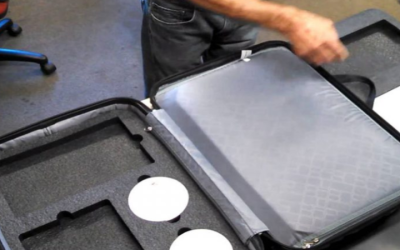Although you can’t always see it, the power of fluid drives business today. Hydraulic cylinder applications are present in most industries today. What is hydraulics and why is it so important? Let’s look at the basic principles and explore some common applications to show you.
How Hydraulics Works
Hydraulics means fluid, and when it’s pressurized it creates a lot of force. This force happens because fluid is only pressurized, so far, and it does not compress (like air). Here is an example of hydraulic power in action:
Imagine a hydraulic cylinder with a piston, piston rod, barrel, spring, and seal. When fluid enters the barrel at one end, it pushes the piston back in the cylinder. The piston rod moves back, compressing a spring as it retracts. The rod connects to a device which raises the dump bed of a truck. When the process reverses, the arm retracts and lowers the dump bed. This is how a single action cylinder works.
Hydraulics releases an enormous amount of force, and that is why fluid can lift heavy dump beds and run drilling equipment as it digs deep into the earth. Some cylinders are double-action, and they can do more complicated tasks. A double-acting cylinder uses fluid on both sides of the piston seal. As fluid enters one end, the piston retracts, pushing fluid out the other end and moving the system. By changing fluid direction with a valve, it creates a smooth in and out motion. Excavators and lift trucks use these hydraulic cylinder applications.
Special Applications
Hydraulics technology plays a major role in industries like mining, forestry, construction, road work, automotive, and the oil and gas industries. Special applications include telescoping cylinders and plunger cylinders. Some hydraulic cylinder manufacturers create custom cylinders for large earth moving equipment and drill rigs out in the ocean waters.


